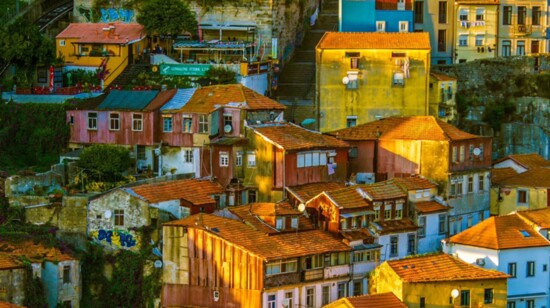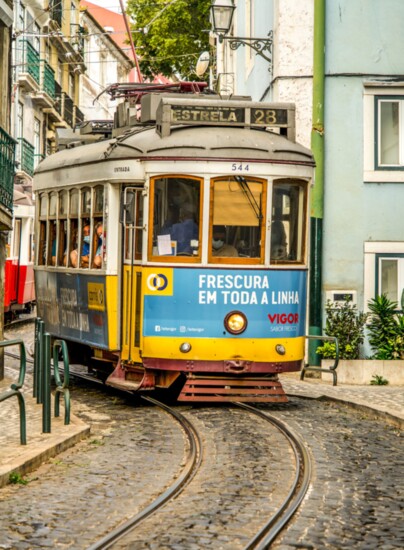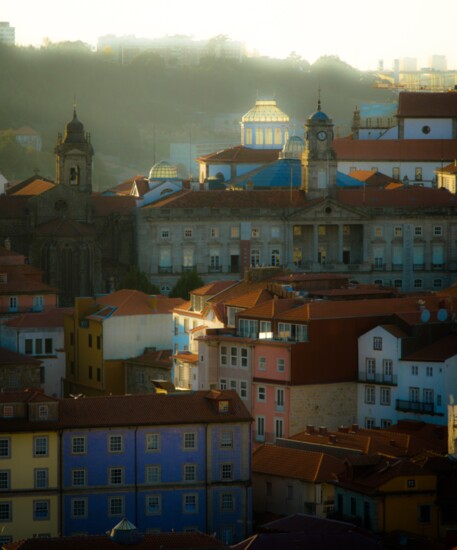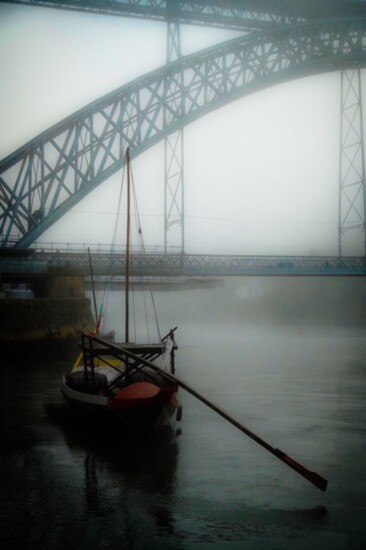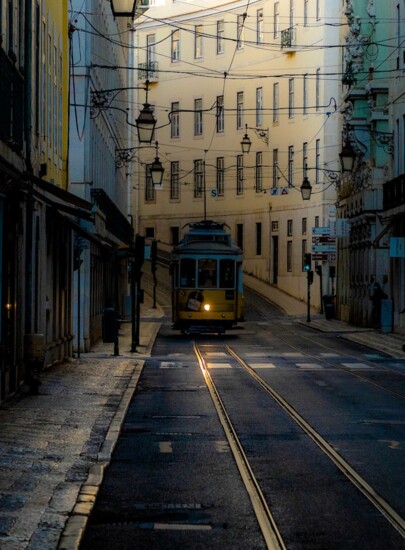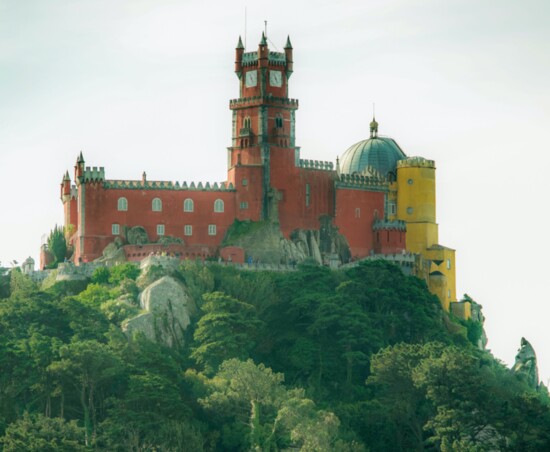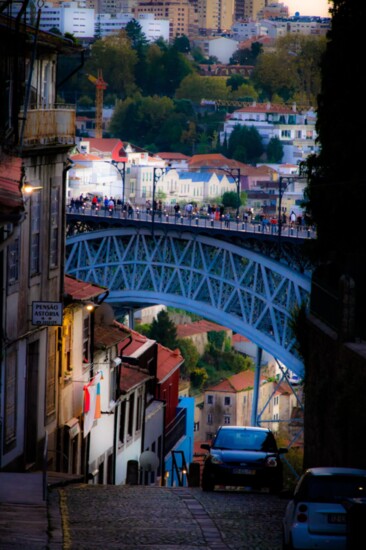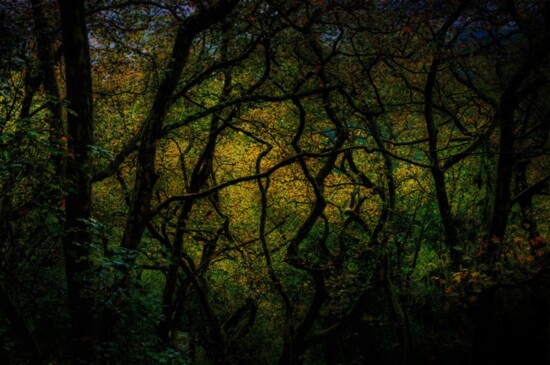Bom dia, (bohn dee-ah, good day)
On June 7, 1494, Pope Alexander VI divided the world in half, the western half given to Spain, the eastern to Portugal. I’m not convinced the world was the Pope’s to give, however it does speak to the power Portugal once yielded. Roughly the size of Indiana, Portugal was a military and economic superpower for nearly six centuries.
Much of the trappings of empire still exist, however, today its conquests are more of a tourist nature, sharing its beautiful beaches, vibrant cities and innumerable sights. As for its natural beauty, think of it as a miniaturized California, the entire country has a beach on one side, mountains on the other.
Let’s start our tour with the three most important words to add to your Portuguese vocabulary. Pastel de nata! Which may be loosely translated as a “a circular morsel approximately an inch tall and about three inches round of custard filling in a flaky crust of ambrosia”. Think of it as sunshine in a crust.
With that in mind, our first stop is Lisbon, where most people will fly into Humberto Delgado (or Portello) International Airport. This is a transportation hub where you will find bus or train service that covers the better part of the country. If you rent a car, beware of speed traps, especially in small towns where you pay your fine directly to the local police! Expect to be stopped for routine checks by police, and make sure your insurance info is up to date. We elected to take buses and trains.
Lisbon fronts the Atlantic Ocean and has Rio Tejo running through it. The seaside boat traffic is a treat to watch, specifically from the Praca do Comercio. It’s a large square where locals and tourists alike gather to watch the sunset behind the 25th Day of April bridge. Lisbon’s city center has passed its prime. Sometimes charming, but heavily graffitied, it can feel a little tired. That said, it still packs a punch when it comes to sites— some of the highlights are Castle Town, (a castle with a view), The Baixa, Bairro Alto and Alfama districts, which comprise the “Three Neighborhoods” and are terrific for exploring, shopping, and dining.
Moving on, three miles west of downtown Lisbon is Belem, where Portugal’s golden age began. From this port the voyages during the Age of Discovery (and conquest) set sail. You’ll find the Monastery of Jeronimos dominating the town and housing the earthly remains of the explorer extraordinaire, Vasco da Gama. Belem is also ground zero for the aforementioned Pasteis de Belem, (Pasteis de Nata).
Another great day trip is Sintra, with its version of Neuschwanstien perched high on the hill. It’s a fantasy of color and ornate facades. Within the same area and very walkable, (if you love hills) is the Moors Castle. Both structures are visible from each other and both have extraordinary views. That said, we were completely taken with the “gardens” of Sintra Castle. We enjoyed lush flowers everywhere and beautiful swans milling about the ponds.
Evora, a whitewashed town southeast of Lisbon, is roughly 1.5 hours by either train or bus. This village has over 2000 years of history! We found a laid-back hamlet where you can discover the world of cork. Everything seems to be made of cork in Portugal, from sandals, lampshades, to wallets and purses. I didn’t see cork underwear but they have to exist.
From Evora we took the bus back to Lisbon and headed north on the high-speed train to Coimbra. The highlight for us was the university, founded in 1290. The library alone is worth a visit. Biblioteca Joanian or King John's Library with its 55,000 books is a marvel. The whole of it is elegantly carved wood, from the pillars to the desks with gold inlay. Old town Coimbra is a little tattered but has those fun hide-and-seek narrow streets, giving it an Arab, Moorish feel to it.
Back on the high-speed train headed north to Porto, or mini Lisbon. Porto may be our favorite stop—built of granite on the water, the Douro River winds through it making it a city of bridges. Spend some time relaxing on the beach or surfing. If you enjoy seafood, Rua Godinho, a very long street, (in the Matosinhos district) is lined with a variety of seafood restaurants. Each one has an outside grill and every manner of the freshest seafood is available. I would be remiss not to mention the Lello and Irmao Bookseller. I’ve seen a lot of bookstores around the world and will say this one may be the most beautiful.
Lastly, spend some time in the Riberia area. Although touristy, it feels gritty and authentic with restaurants, bars, and cafes, all featuring a terrific view of the river with waterfront seating. Behind Riberia, climb the hill to the old town. There are a few little cafes tucked into the hillside, where you can catch your breath, have some port and marvel how the people of Porto climb this every day.
There’s your appetizer for Portugal! I believe it’s a country often-looked for its larger, trendier neighbors of Spain and France. We visited in October, a good time to go, not too hot and too cold, not too crowded.
Saude! (sah-oo-deh, cheers!)
